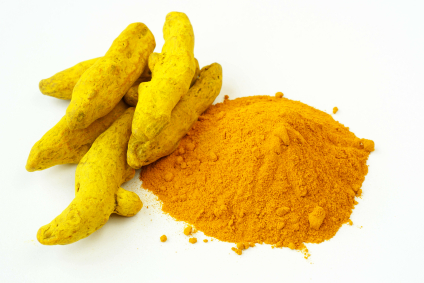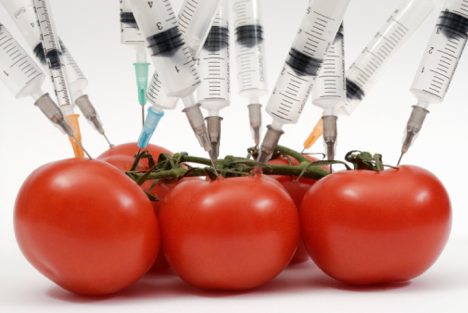Nutrition
- Details
- Category: Nutrition
- Hits: 15447

Curcumin, a substance in turmeric, may help to reduce inflammation. Several studies suggest that it might ease symptoms of osteoarthritis and rheumatoid arthritis, like pain and inflammation.
- Details
- Category: Nutrition
- Hits: 10561

Is GMO Modified DNA Helping Or Harming Humans?
Recently it has been shown that GMO modified foods allow new DNA to be introduced directly into human blood by consumption of GMO modified foods. It is also known that we consume many GMO modified foods without our knowledge. In animal husbandry we have modified chickens for more breast meat, stronger resistance to many diseases, and changed their appearances for mass production for many years. The same processes have been applied to the beef and pork industries. Not only have the genes of the actual animals been modified but the animals themselves have been fed GMO modified foods.
Have these changes resulted in better human health or worse human health is a major topic of discussion today by consumers on GMO modified products. Alterations in genetic DNA often take generations to do but, when artificially modified suddenly, are there long term negative results? The answers to those questions will probably take many more studies and many more years to decide so what can be done now to avoid harm?
One of the basic answers is allow consumers to form their own opinions and choose whether they desire to eat, or not eat GMO modified foods. This can only be done by strict identification of GMO foods, or processed foods in which GMO food sources were used in the production or manufacturing of those foods. Due to perceived risks to human health it's time to require identification of GMO and non GMO modified foods so consumers can decide for themselves.
- Details
- Category: Nutrition
- Hits: 8776

Fresh Fruits & Vegetables
Is it possible the addition of synthetic vitamin supplements is harming humans in the long run? The work of Albert Szent-Gyorgyi in 1928 discoverd the need for vitamins in living entities such as animals, plants and people. It was apparent with the outbreak of scurvy and the cure of it by eating fresh fruits that there was something our bodies was missing that led to disease and death. The fruit provided it but it took Szent-Gyorgyi to discover exactly "what" it was.
Since then we have paid a great deal of attention on diet and eating the proper foods to maintain health and ward of disease. On the surface that sounds fine except with the discovery of genetics we are now learning that if we fail to use certain genes then we lose them or they fail to express themselves. Today with the abundance of vitamin supplements and fresh produce from around the world we may be entering a time when evolution is disabling our genes to make certain nutritional supplements such as vitamins.
We know in rehab. medicine that if one fails to exercise and use muscles then they atrophy and eventually become non functional. Current research indicates we have begun to see a disabling of genes that historically allowed our body to produce vitamins, minerals for our health. Why is this occurring? We have such an abundance of external foods supplying us with the necessary nutrients that no longer are the genes necessary for our nutritional needs.
Read more: Can Humans Harm Themselves With Too Many Vitamins?
- Details
- Category: Nutrition
- Hits: 8607
How is food used to produce energy in our cells?
The below video helps break down the way we take food, after digestive breakdown, and convert it to ATP, adenosine triphosphate. The importance of using electrons in the electron transport chain to couple with oxygen creating the tri bond of phosphate is the process of energy creation. The role of energy creation is to minimize the existence of free radicals in our body which is often a precursor to many diseases and stabilize existing atoms so they are grounded. The energy substance of ATP is simply the addition of one phosphate to the existing ADP, adenosine diphosphate or take 2 phosphate molecules, add one more and now we have 3 phosphates or ATP. It is the third phosphate molecule created in the mitochondria that enables energy for cellular function.
- Details
- Category: Nutrition
- Hits: 9620
Mitochrondia In Cell Producing Energy
Dr. Albert Szent-Gyorgi won the Nobel prize in medicine for the discovery of the oxidative phosphorylation cycle, or "how do cells create energy/". That was only the beginning of his journey trying to understand health and healing. He later postulated that the maintenance of health is best preserved by the supplementation and redistribution of electrons to prevent injury. At the time of his later work the emergence of electrotherapy devices capable of electron supplementation and redistribution was only beginning to emerge.
Dr. Gyorgi's legacy was celebrated on what would have been his 110th birthday by Imre Cizmadia in the Journal of Molecular Structure (Theochem) 666-667 (2003) 11-34. Dr. Gyorgi's explanation was:
- "All diseases start at the molecular level, thus, ultimately, all cures must be achieved at the molecular level"
- "All diseases are the result of some unfavourable electron distribution within the human body, thus ultimately all cures must represent a favourable perturbation on the ill-distributed electron density."
- "As the electron distribution gets further away from the ideal or perfect distribution we reach a large collection of ill distributed electron densities, which are exhibited by people suffering from various diseases."
The compelling evidence of healing that is occurring today has not been adequately explained nor understood. The below is obvious in results:
- Pulsed Galvanic Stimulators heal decubitus ulcers, and accelerate healing if slow healing;
- Russian stimulators increase muscle bulk and strength in high performing athletes;
- Tens machines do lessen pain in many acute and chronic pain conditions
- Interferential/Tens combination machines accelerate tissue repair, lessen pain post operatively;
- Functional electrical stimulators restore functional movement for stroke, multiple sclerosis, and other patients lacking volitional control;
- Iontophoresis machines administer water based medications such as cortisone without the use of needles or ingestion ( this is basically totally understood as to how using laws of physics)
- Bone stimulators do make non union fractures heal and increase the rate of bone unionization in injuries such as spinal
It is the above processes that have defied conventional knowledge as to "how". The general explanations relate to "increased blood flow", "special biological wave of our unit", "release of natural pain killers", "decreases inflammatory process" or "initiates inflammatory process". The reasons for the success of the various electrotherapy products is not explained by those answers. We have to look at the submolecular aspects of life, be it plant, human or animal and try to understand the atomic aspects of living and dying. Albert Szent-Gyorgi was well ahead of conventional science using quantum physics as the building blocks.
The Infrex FRM machine incorporates Albert Szent-Gyorgi's concepts for electron supplementation and electron redistribution.
- Details
- Category: Nutrition
- Hits: 8419
Nutritional Foods For Meal Planning
In today's world with a mass of convenient pre-packaged products we are left with little knowledge of what the process did to the nutritional properties of the ingredients used. Most often the popular health/nutrition press emphasizes the best pharmacy is by simply looking at what is available in your local produce market. Prevention is a key to health.
MedFaxx provides below a "nutrition widget" that allows you to enter up to 6 ingredients to determine what those foods provide nutritionally. The results are not absolute due to:
- Was the food grown from organic sources, non GMO
- Is the food locally grown
- How exactly was the food prepared including if there were coatings, fried, broiled as preparation affects nutrition
This is a free nutrition widget intended to give you a quick one stop tool to help you prepare food from a nutritional perspective.
- Details
- Category: Nutrition
- Hits: 11029
Fibromyalgia & Hypoglycemia Foods To Eat

Foods to eat for fibromyalgia and hypoglycemia symptoms are:
"Light" Carbohydrates with Protein
Eating "Light" / "Non-Filling" Carbohydrates (and filling up with other macronutrients such as healthy proteins and healthy fats) will keep insulin levels from rising and keep fibromyalgia symptoms from getting worse.
Examples of "light" carbohydrates are:
strawberries,
blueberries,
cherries,
lettuce,
spinach,
brocolli,
cabbage,
eggplant,
string beans,
zucchini,
soy beans,
mushrooms,
bell peppers
apples,
oranges,
onions
And do not forget to eat a good quantity of proteins and fats with these "light" carbohydrates. (Tip: Stir frying vegetables along with protein sources make an excellent meal.) "Light"/ "Non-Filling" Carbohydrates have a low glycemic load which means they breakdown to a moderate amount of sugar in the body and as long as one consumes healthy proteins and healthy fats along with the "light" carbohydrates, insulin will not increase, blood sugar will not decrease, and fibromyalgia symptoms will not flare-up.
Healthy Protein Foods:
chicken breast,
turkey breast,
round steaks,
egg whites,
fish,
soy hot dogs & sausages, & burgers.
Shrimp,
lobster,
crab
Above seafood is acceptable however know that they are low in fat but high in cholesterol. Not all cholesterol is created equal so always differentiate between the cholesterols and remember all of us need ldl cholesterol. The ratio of LDL and HDL cholesterol is possibly more important than any standard measure of a single form of cholesterol.
All proteins can be eaten without fibromyalgia symptom flare-ups, however the best sources of protein are those with very little saturated fat and cholesterol.
Healthy Fats:
The best sources of fats are monounsaturated fats ("healthy" fats). These fats come from nuts like macadamia nuts, walnuts, pecans, peanuts, hazel nuts, cashews and almonds. Pharmaceutical grade Omega 3 fish oils are terrific as they are free from mercury (however it is costly). Olive oil, canola oil, and sesame oil are also good sources of "healthy" fats.
Material for this article derived from : http://www.fibromyalgia-diet.ws/favor.html




